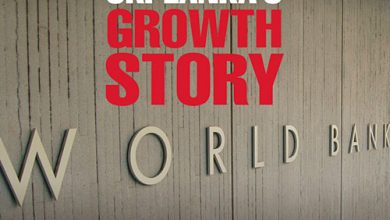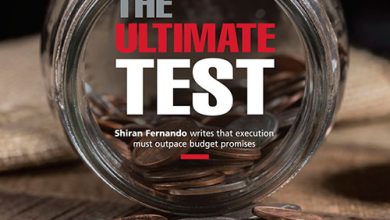THE FED HAS A HAWKISH TONE
Samantha Amerasinghe feels that the Federal Reserve won’t cut interest rates soon
With inflation hotter than it’s been over the past four decades, this year’s Jackson Hole Economic Symposium speech on ‘Reassessing Constraints on the Economy and Policy’ delivered in August was keenly anticipated. But it fell short of producing anything groundbreaking.
As expected, Chairman of the US Federal Reserve (Fed) Dr. Jerome Powell didn’t shed much light on the key unknown – i.e. how far will interest rates have to rise to bring inflation down? The symposium was a damp squib acting more as a shield against those looking for a fast Fed pivot or rate cuts in 2023.
Let’s look at where inflation is heading in the months ahead and assess what the Fed’s next move may be.
Uncertainty abounds but one thing is clear: the Fed’s interest rate decisions going forward will be data dependent.
Three key themes emerged: the US economy still has forward momentum with an extremely tight labour market and unacceptably high inflation; the Fed must tighten monetary policy further to restrain the economy and ease pressure on the labour market; and the Federal Reserve won’t relent until it’s sure it has done enough for long enough to achieve its two percent inflation target.
Remarkably, the COVID-19 crisis marked the end of a decade when inflation as measured by the core Personal Consumption Expenditures (PCE) Price Index, which is the Fed’s preferred yardstick, was consistently below the two percent target.
Where interest rates would end up next year remains the most debated issue among market participants and Fed officials, with the former expecting cuts and the latter warning that rates will need to stay restrictive for a lengthy period.
Arguably, the most telling line from Powell’s remarks was that “historical record cautions strongly against loosening policy prematurely.” In a nutshell, he made it clear that there’s still work to be done and the job will take time to complete.
The world’s largest central banks have coalesced around Powell’s simple message and are ready to follow through with higher interest rates. For instance, the European Central Bank (ECB) has little choice but to continue tightening even if Europe’s economy tips into recession in 2023. This will undoubtedly be the chosen path for many other Western economies too.
Nonetheless, there may be some relief ahead with global consumer price inflation estimated to fall to 5.1 percent in the second half of this year.
In addition, though US consumer price inflation was running at an 8.5 percent annual rate in July, which is well above the Fed’s two percent target, concerns about an imminent recession have eased with a strong employment report and signs of robust consumer spending.
Since March, the Fed has pushed its funds rate to a range of between 2.25 and 2.5 percent. Both markets and the Federal Reserve expect further hikes to 3.5 percent at least by year end. These will not be hard decisions as long as the economy is still growing and/or inflation remains high.
Ever since the 1987 stock market crash, the Fed has cut rates at the first sign of an economic downturn. It did so in 1990, 2001, 2007, 2019 and 2020. But on all those occasions, inflation was relatively under control – so it had no reason to delay.
Before 1987, when inflation was a persistent problem however, a weaker economy didn’t always bring rate cuts.
In response to the recession of 1969/70, the Fed quickly cut rates on the premise that the slowdown was deep and long for wages to soften. That was soon seen as a mistake since inflation didn’t decline as expected.
In 1974, the Fed raised rates in the middle of a recession due to persistent inflation. Currently, inflation is too high and it would be risky to cut rates precipitately in anticipation that inflation will fall. In our view, a mild recession will be sufficient to put the Federal Reserve on hold... but not to cut rates.
A year ago, Powell’s assessment proved to be wrong. He asserted a nascent surge in inflation was “likely to prove temporary”; that the low unemployment rate “understates the amount of labour market slack”; and “we see little evidence of wage increases that might threaten excessive inflation.”
He endorsed the more inflation tolerant monetary policy framework that the Fed adopted in 2020 as “well suited to address today’s challenges.”
Over the past couple of years, the Fed’s inflation stance has evolved from a persistent undershoot of inflation from its two percent longer-term objective and wanting more of it to “inflation being transitory.”
Today, this narrative looks particularly hollow with inflation still running high. Therefore, we expect Powell to stick to his pledge of higher interest rates – even though GDP has been in the red for much of this year.
After missing on inflation so badly last year, the Fed will not want to repeat its mistake.







